Mixing unit for underfloor heating: what is a collector and how to connect it correctly?
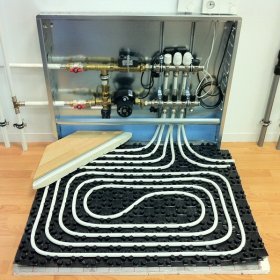
A successful alternative to radiator heating of the house is a system of underfloor heating, designed for one room (bathroom, children's room), and for the entire building. It, being an integral part of the general heat supply system, is nonetheless autonomous, since special preparation of the heat carrier is required before entering the heating circuit — a set of pipes mounted in the floor. The role of the preparatory station is performed by a tandem - a mixing unit for a warm floor (collector) plus a pump group. We suggest that you take a closer look at what it is, how it works, and how to properly connect the collector.
Content
Purpose of the mixer for a warm floor
Visually, the mixing unit looks like a group or chain of pipelines assembled in a specific order and having a single purpose - to combine two different coolant flows into one common one.
Three types of mixing can be distinguished:
- parallel;
- consistent;
- combined.
The most acceptable is sequential mixing, mainly due to the increased productivity: almost all the flow goes to the consumer.
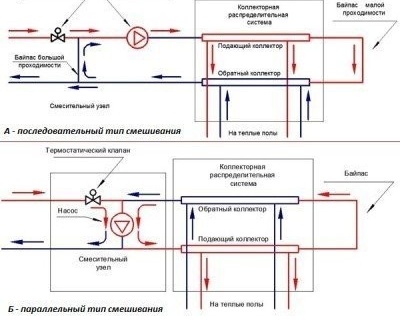
With a sequential type of mixing, the heat transfer medium is pumped by the pump from the heat source to the consumer, while in parallel, the heat transfer lines are separated, due to which part of the energy is lost
Sometimes they use the parallel type. The flow to the consumer is variable, but you can install a two-way valve with the ability to adjust.
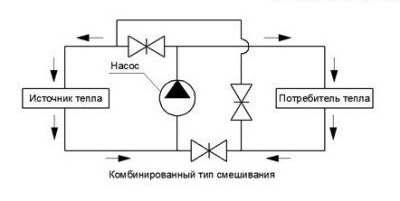
With a combined type, it is possible to use simultaneous and parallel mixing or switch the process separately to one of them
The assembly scheme of the collector group may be different, consider one of the options:
- tee pipelines;
- valves (mixing, three-way, regulating) on both branches - supply and return;
- circular type pump;
- adjustment and automation equipment.
Circulation pump pumps water until the temperature reaches the set value. Further, the automation is triggered, the valves close the coolant access and the process stops. It should be remembered, especially with self-installation, that the collector for a water heated floor should be equipped with a drainage and air exhaust system.
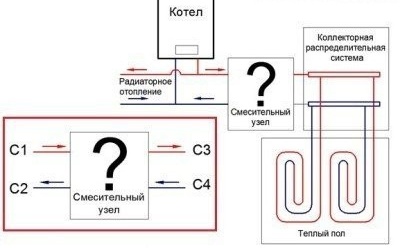
In complex heating systems, in addition to collector equipment, a mixing unit is used that connects the underfloor heating system to radiator heating
Collector selection and connection
The collector model is completely dependent on where and how it is located. warm floor. This ultimately affects its cost, as well as the degree of safety of the equipment. The mixing unit of the collector is the main and rather vulnerable part of it, since a coolant of different temperature is concentrated in it. During the mixing process, water reaches a certain temperature, which must be stored in the specified parameters. The further work of the system depends on the selected materials and the quality of the assembly, therefore, such details as a mixing unit, pump or temperature regulator should be treated with special attention.
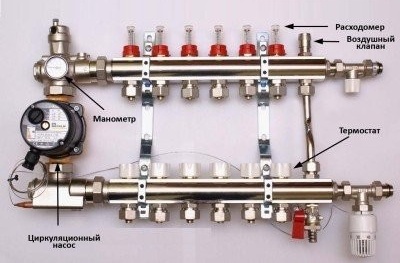
The collector cabinet is a very conventional designation. It can look like a special metal box or just a stand for easy installation of equipment
What do we pay attention to when buying?
The cost of distribution manifolds for a warm floor is influenced by the material of manufacture: some models consist mainly of brass, others of stainless steel. Also, the price depends on the complexity of the equipment - among the various types of collectors there are the simplest ones with a minimum set of elements, and there are fully equipped with additional protection devices (Mayevsky taps), drain taps, sensors for regulating and controlling the flow of coolant.
Equipment equipped with a thermoregulation unit, which includes a set of temperature sensors and other measuring instruments, is popular. Automation regulates the distribution process, and at the right time turns on the air release valves or closes the coolant flow. The standard model has a pair of thermometers, which make it possible to save heat loss.
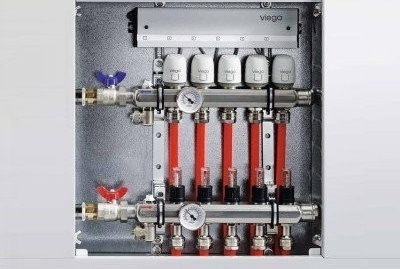
A sample of a stainless steel manifold is the Fonterra product, which has the ability to connect pipelines on both sides and install a servo drive
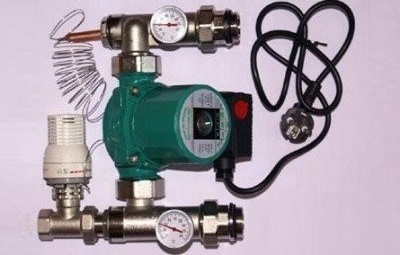
The optimal location of the thermometers to take into account the temperature of the water - on both pipes, supply and return; this arrangement allows you to control the heating of water to a certain indicator
If there are several heating circuits, it is recommended that each of them be equipped with a special thermoregulation device, consisting of combs (steel or brass) and flow sensors. The set of such a collector includes an air vent, a mixing valve, a cover for the thermometer and a direct thermal head with a probe for immersion in the coolant. Using a valve, a certain amount of hot water enters the circuit, and a thermal head controls the process and prevents malfunctions.
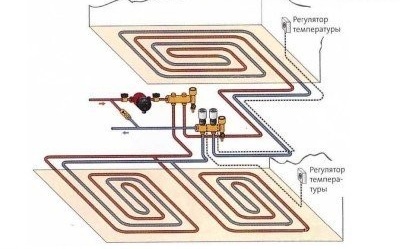
Sometimes a single distribution manifold serves several floor heating circuits. In this case, the length of each loop should not exceed 120 m
The cost is of paramount importance to some - do not jump above the allocated budget, however, do not forget about such important nuances as the area of the room and the purpose of its use. For example, for a small room (bathroom, bath), a simple plastic collector without a complex temperature control system is suitable. If flow meters are still required, they can be purchased additionally for a small cost. In a voluminous room, it is better to use a more reliable group of faucets with precise temperature control, due to which optimal balancing of the circuit is achieved.
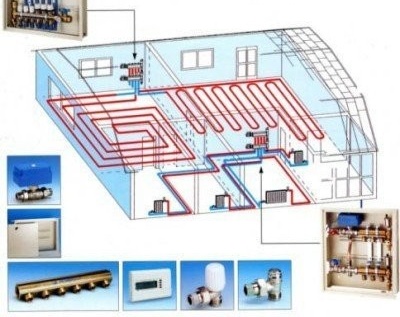
Layout of two collectors in a large room. The construction of the building is such that it requires the installation of several contours of the heated floor, respectively, the number of distribution nodes increases
Collector Assembly Location
Before mounting the underfloor heating manifold, it is necessary to install a metal protective cabinet - open or closed. Sometimes the collector assembly is left completely open - access to it is easier, but the protection of parts and joints suffers. The place for the cabinet is chosen by assessing the location of the contours of the water floor.If there are several branches, then the cabinet is installed in the middle, at the same distance from the working circuits and in close proximity to the main pipes. This mid-position ensures maximum hydraulic performance.
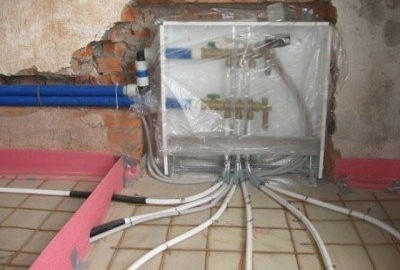
The location of the collector assembly is calculated at the design stage. If you create a special niche in the wall, the equipment can be placed in the corridor, in the kitchen or in any living room
An ideal option for equipment placement is a wall niche protected on both sides, which allows neatly positioning the collector parts and leading the pipeline. If heated floors are installed throughout the house, then for relatively large rooms, separate distribution nodes are required.
Features of the installation of equipment
On the Internet you can find many instructions for installation and commissioning of equipment, here is one of the schemes for connecting the collector of underfloor heating. It allows you to fully assemble the system with your own hands, sequentially connecting the most important parts - the pipeline, the distribution unit and the boiler.
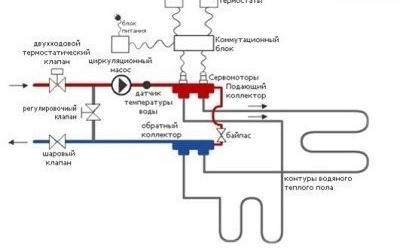
When installing the collector, you should pay attention to such "trifles" as the mounting point of the temperature sensors and an additional source of electricity for the power supply
It is better to start with the installation of a thermometer and shut-off valves, which are installed on all loop outputs. As a rule, these parts regulating the operation of the feed and return are included in the kit of the collector kit. Using the scheme, it is possible to quickly and competently install the distribution unit itself, connect the pipes for supplying and discharging the coolant, and also create the ability to disconnect one or more heating circuits if necessary.
The parts are connected using compressor fittings. To fix some connections, use the standard set of nuts, bushings and ring clamps. If the diameter of the parts does not match, use adapters.
Sample instruction manual
An elementary schematic example is a simple manifold with a set of shut-off valves.
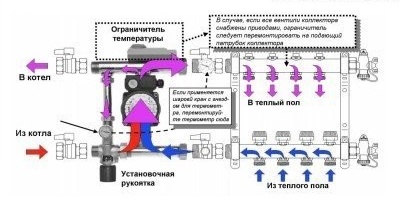
A simple installation scheme for collector equipment is good for small rooms in which air heating is not constant, for example, for bathrooms
The installation process is as follows. Initially, two pipes are connected to the distribution unit - for supply and return, then the elements of the heating circuit are connected - heat transfer branches for the underfloor heating. This system is completely dependent on the operation of the heating boiler: any decrease in temperature in the boiler or restriction of the flow of coolant affects the decrease in the floor temperature in the room.
In order for the simplest circuit to become more functional, a circular pump, an air vent, a drain valve, and a three-way mixer should be added. Such a selection will allow you to control the heating process in full.
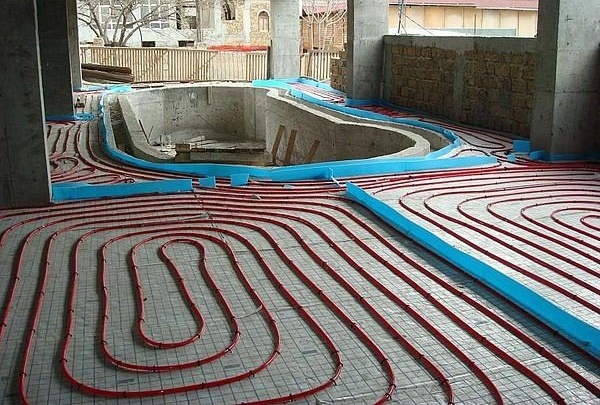
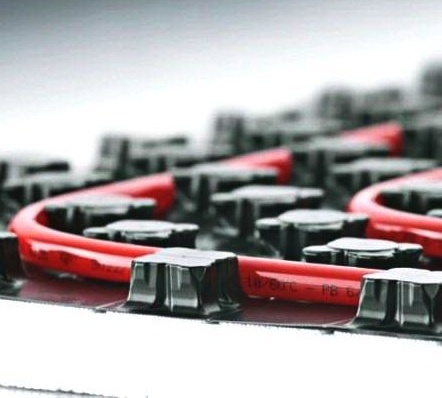
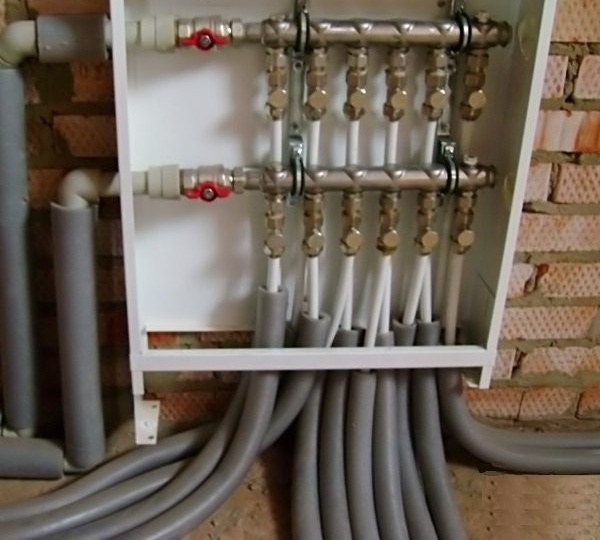
2 comments